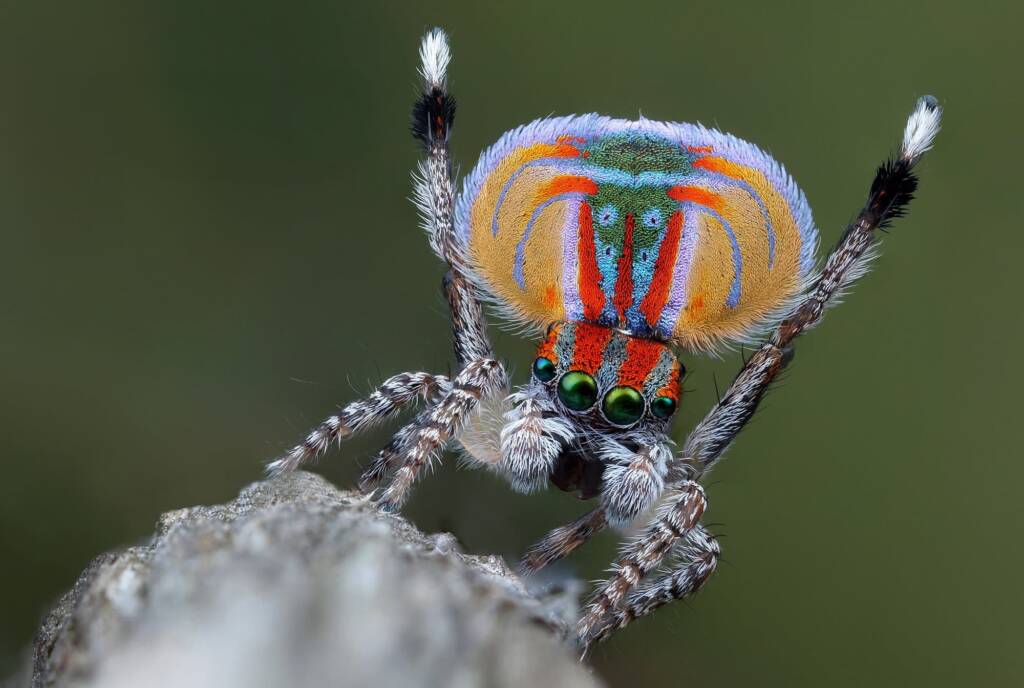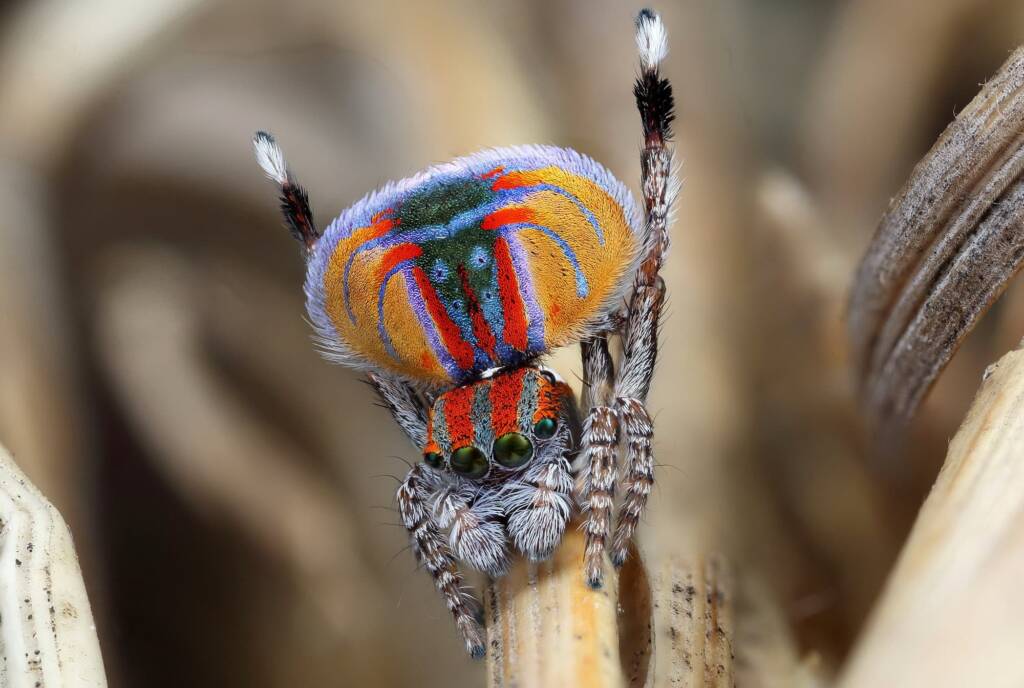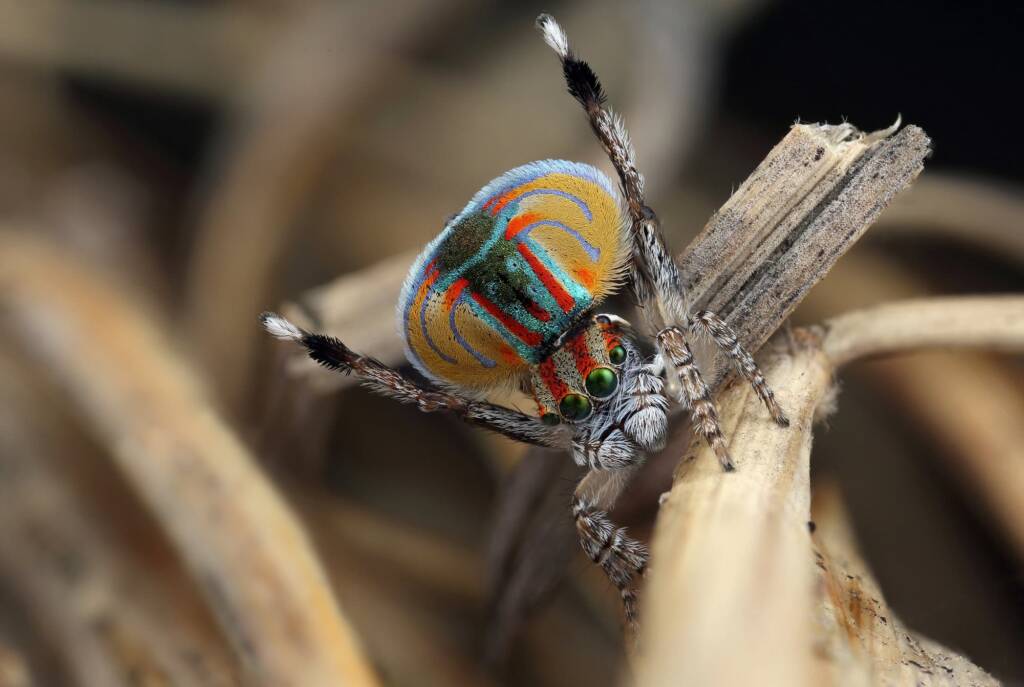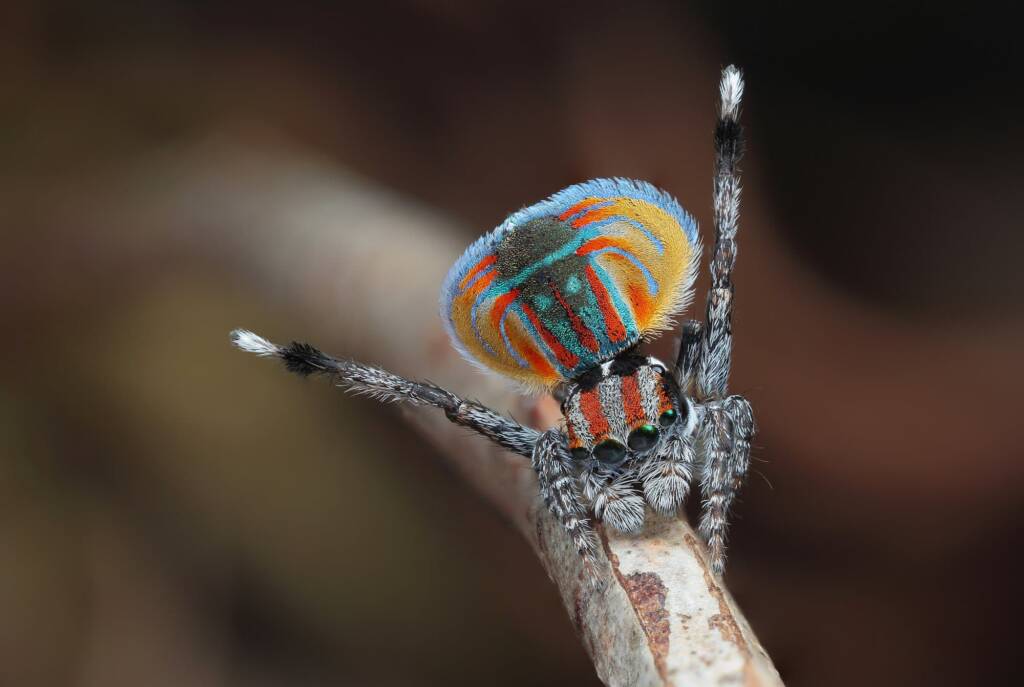Maratus volansMaratus volans Dancing Maratus volans Female & Immature Maratus volans Prey
Although people once thought they could fly, there is no doubting that the male Maratus volans can dance.
It is one of the endearing characteristic of the Maratus volans and that is the male will dance for his woman. He would look good on any disco floor, and what female spider would turn you down, when you do a boogie woogie…
Seeing them in action, it is understandable why the Maratus volans belong to a group known as “peacock spiders”. When they hit their stride with their colourful flap raised and waving a pair of legs in the air, it is sure to bring a smile to your face.
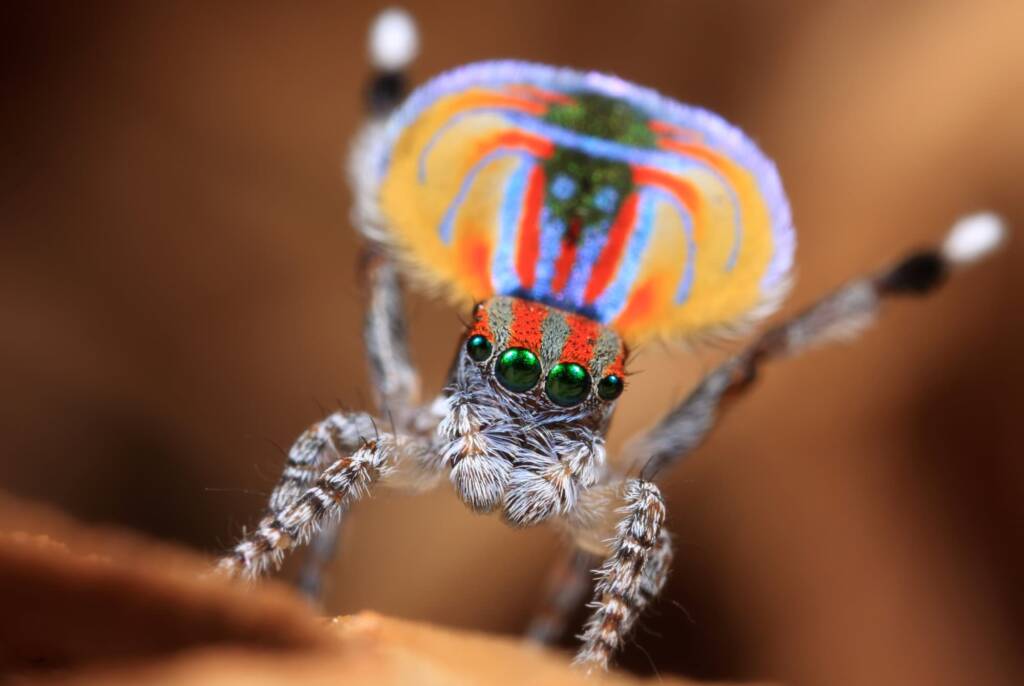
The males resplendent in their colours of red, blue, yellow and black, have flap-like extensions of the abdomen fringed with white hairs, that are usually folded down.
It is during the dance – “mating ritual”, that the male raises his abdomen, then expands and raises the flaps, so that the abdomen forms a white-blue fringed, circular shape field of colour. This display is compared to that of the peacock birds. During the mating ritual, the third pair of legs is also raised for display, showing off a brush of black hairs and white tips. These legs are seen to be used in a sort of clapping motion to attract the attention of a female.
The male is also known to vibrate his abdomen, while waving raised legs and tail and dancing from side to side. To start with, the female is likely to be attracted to the visual efforts of the male dancing. Whilst the exact mechanism of how the male produces the vibrations is not fully understood, it is known that they are produced from rapid movements in their abdomen.
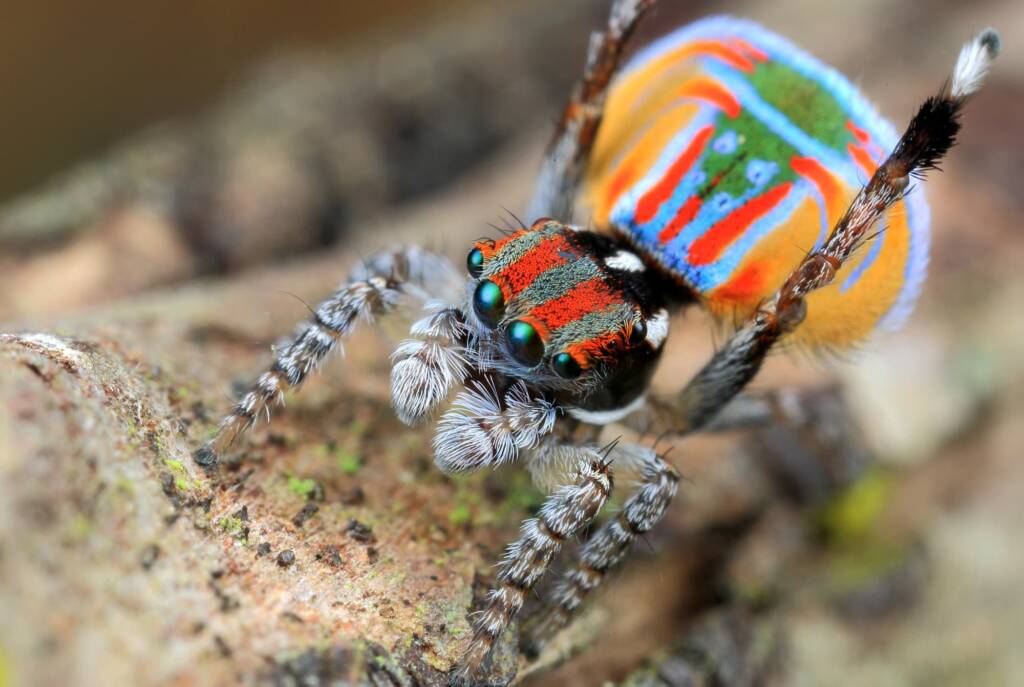
As well as the visual displays and vibratory signals, the male has to be persistent, staying within proximity of the female and maintaining constant visual contact.
If the female chooses to mate with the dancing male, she may show her interest by occasionally respond with her third pair of legs. Her legs will be stretched out as they move, one leg more often engaged than the other.
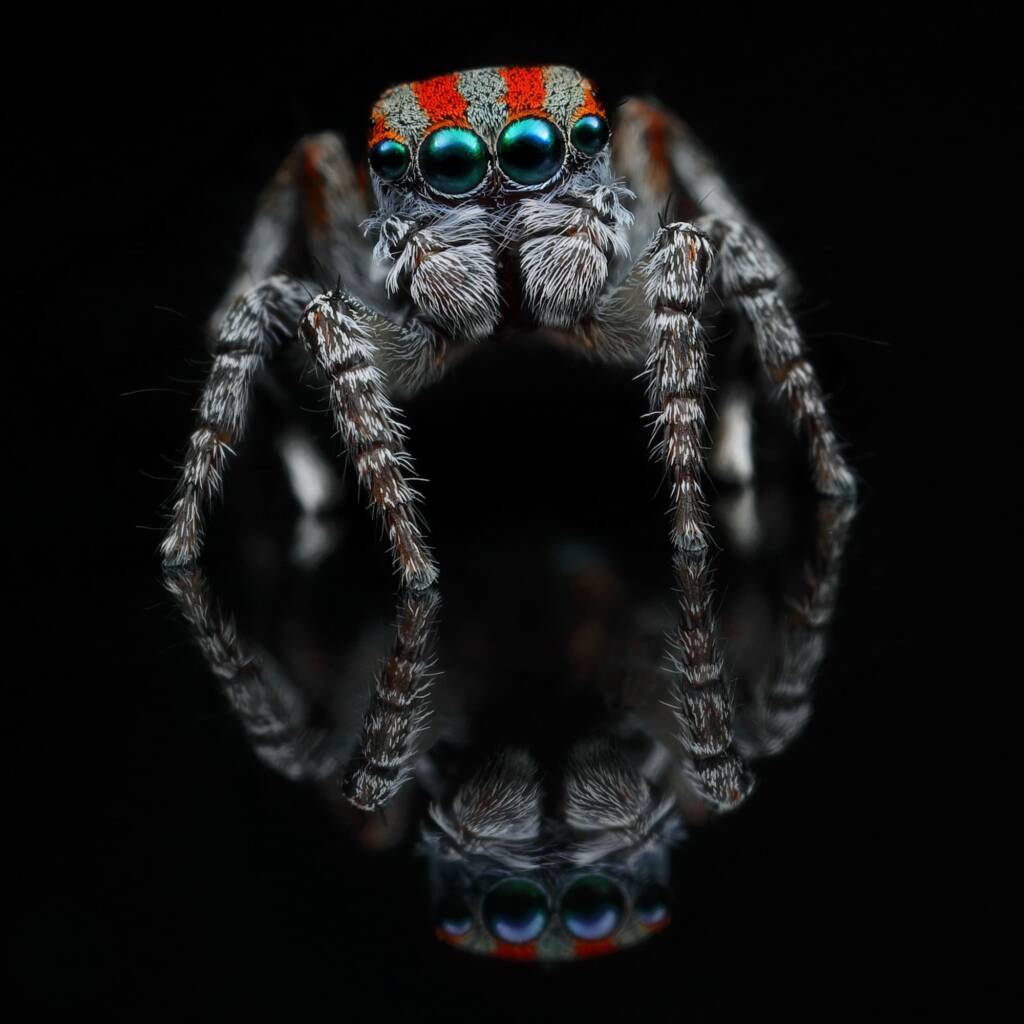
Of course it is not all plain sailing for the male. If the female is not interested, she may be tempted to attack, and given the chance to kill, then feed on him. She may of course try to eat him after mating (sexual cannibalism). The only recourse for the male is to be agile and to jump quickly out of her reach.
Footnote & References
- Photographs (Project Maratus) © Michael Doe
- Michael Doe on Flickr – spiderphotography21 and michael doe (Project Maratus)
- Multi-Modal Courtship in the Peacock Spider, Maratus volans (O.P.-Cambridge, 1874), Madeline B Girard, Michael M Kasumovic, Damian O Elias, 27 Sep 2011 – The peacock spider, Maratus volans, has one of the most elaborate courtship displays in arthropods. Using regular and high-speed video segments captured in the lab, we provide detailed descriptions of complete male courtship dances. As research on jumping spiders has demonstrated that males of some species produce vibrations concurrently with visual displays, we also used laser vibrometry to uncover such elements for this species. Our recordings reveal and describe for the first time, that M. volans males use vibratory signals in addition to complex body ornaments and motion displays. The peacock spider and other closely related species are outstanding study organisms for testing hypotheses about the evolution and functional significance of complex displays, thus, this descriptive study establishes a new model system for behavioral ecology, one that certainly stands to make important contributions to the field. https://www.researchgate.net/publication/51700105_Multi-Modal_Courtship_in_the_Peacock_Spider_Maratus_volans_OP-Cambridge_1874
Maratus volansMaratus volans Dancing Maratus volans Female & Immature Maratus volans Prey
Dolophones spDolophones conifera Dolophones turrigera
SpidersIndex of Spider Images Spiders in Australia Araneidae — Orb Weavers Arkys Australian Huntsman Spider Barking Spider Black House Spider Carepalxis sp Celaenia sp Crab Spiders Deinopidae — Net-casting Spiders Dolomedes sp Dolophones sp Flower Spiders Hackled Orbweavers (Uloboridae) Jewel Spider Jumping Spider Long Jawed Spider (Tetragnatha sp) Lynx Spider (Oxyopes) Mangrovia albida Maratus volans Missulena occatoria (Red-headed Mouse Spider) Miturgidae Nicodamidae (Red and Black Spider) Ogre-faced Net-casting Spider Poltys sp (Twig Spider) Redback Spider Scorpion-tailed Spider (Arachnura higginsi) Thomisidae Tiger Spider (Trichonephila plumipes) White-spotted Swift Spider (Nyssus albopunctatus) Wolf Spider



